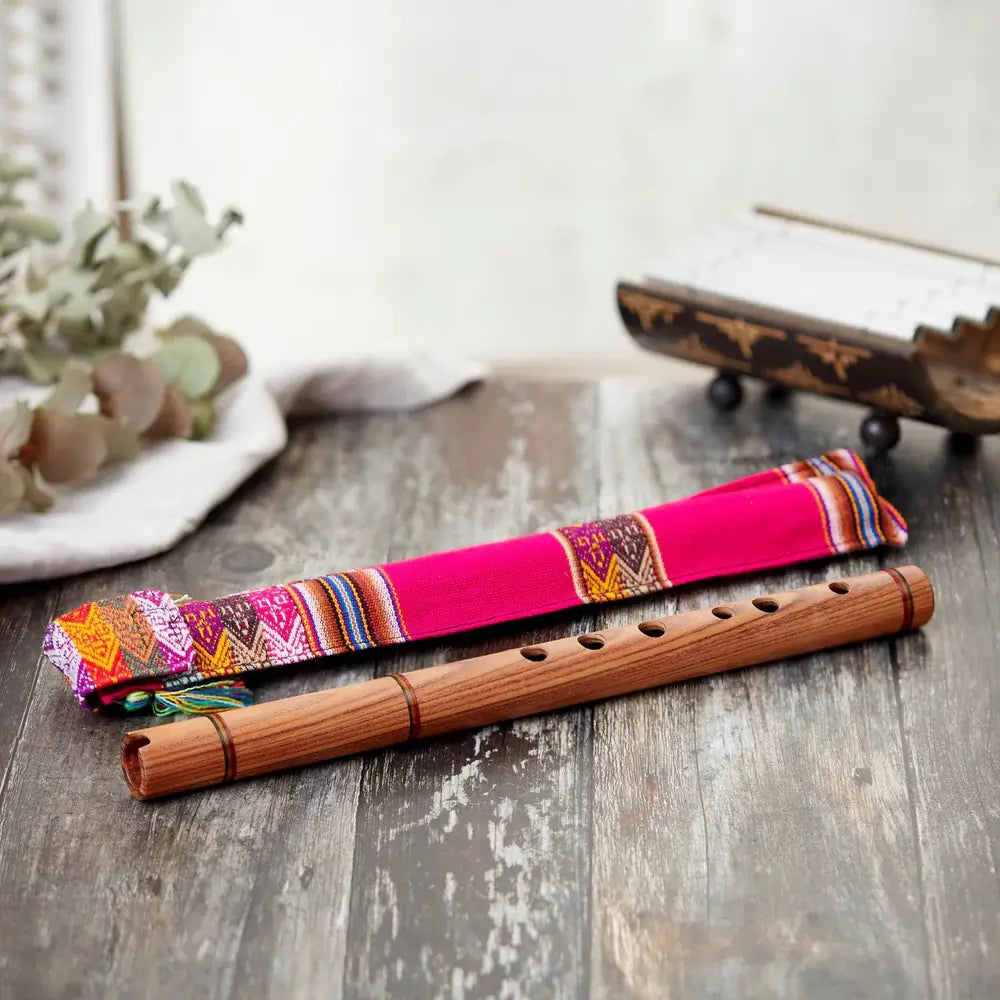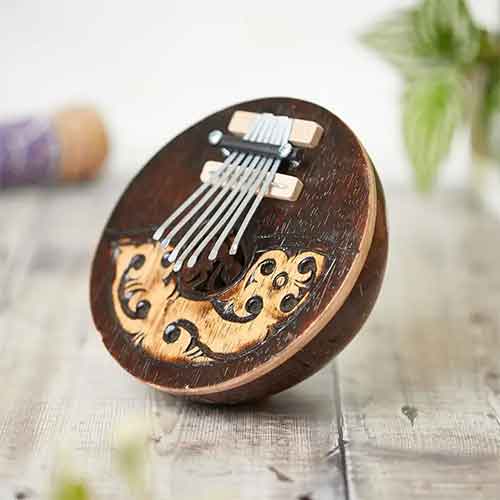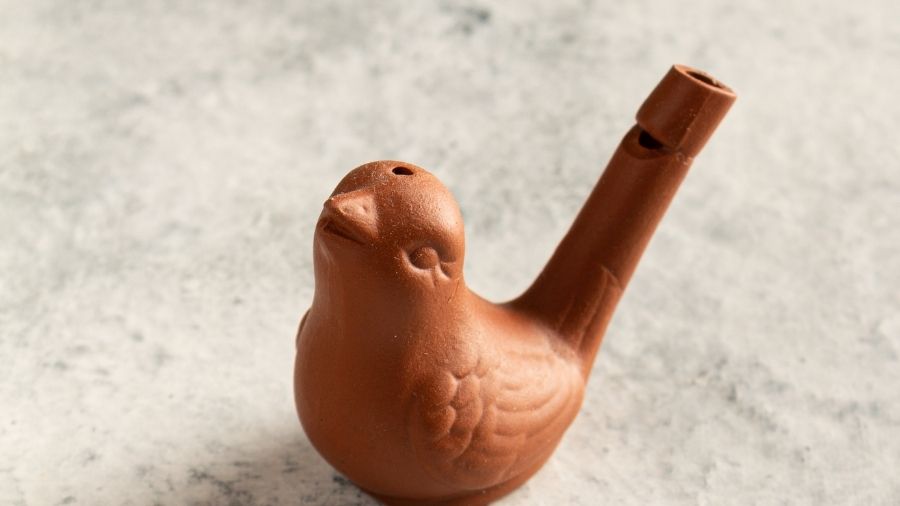Music extends far beyond familiar instruments like guitars and pianos. The world of weird instruments includes devices that create sounds using electricity, water, and even Tesla coils. These extraordinary musical tools challenge our understanding of how music can be made and experienced.
From Benjamin Franklin's glass armonica to the ethereal sounds of the theremin, this article explores ten remarkable musical instruments that push creative boundaries. Each strange instrument represents unique innovations in sound production, featuring unusual playing techniques and distinctive tonal qualities. Get ready to discover some of the most unique musical instruments that have fascinated audiences and composers worldwide.
Theremin

Standing before what appears to be a simple box with two metal antennas, thereminists create melodies without ever touching their instrument. The theremin stands as one of the most peculiar and fascinating musical innovations of the 20th century.
How the theremin works
The theremin operates through electromagnetic fields generated by two antennas. The vertical antenna controls pitch, while the horizontal loop antenna manages volume. Players manipulate these invisible fields with their hands – moving closer to the vertical antenna produces higher notes, while approaching the horizontal antenna decreases volume. This unique control system makes the theremin particularly challenging to master, as musicians must essentially play in thin air.
History of the theremin
Russian physicist Leon Theremin invented this remarkable instrument in 1920 during his research on proximity sensors. The invention quickly captured attention worldwide, with notable demonstrations for Vladimir Lenin in 1922 and Albert Einstein in 1927. The instrument's otherworldly sound characteristics include:
- Violin-like tones with infinite glissando
- Human voice-like qualities
- Ethereal, floating resonance
- Wide dynamic range spanning multiple octaves
Famous theremin performances
The theremin found its way into various musical genres, with Clara Rockmore emerging as its first virtuosa. The instrument gained particular prominence in film scores, featuring in Alfred Hitchcock's Spellbound and The Day the Earth Stood Still. Modern thereminists like Carolina Eyck continue to push boundaries, developing new techniques and reaching millions through social media. The instrument has also appeared in rock music, with bands like Led Zeppelin and The Beach Boys incorporating its distinctive sound.
Glass Armonica
In 1761, one of America's founding fathers created what would become one of history's most musical instruments. The glass armonica, Benjamin Franklin's musical invention, transformed the simple concept of running wet fingers along glass rims into a sophisticated instrument.
Invention by Benjamin Franklin
Inspired by a musical performance using water-filled wine glasses in London, Franklin collaborated with glassblower Charles James to create something extraordinary. His innovation featured 37 glass bowls of varying sizes, mounted horizontally on an iron spindle. Each bowl was precisely tuned and color-coded to represent different musical notes, eliminating the need for water tuning.
How the glass armonica is played
The instrument operates through a foot-pedal system that rotates the glass bowls, while the musician touches them with moistened fingers to produce sound. This ingenious design allows players to create up to ten simultaneous notes, making complex harmonies possible. The bowls, arranged in a compact sequence, enable musicians to access all notes easily, similar to a piano's layout.
Unique sound of the glass armonica
The glass armonica produces tones that Franklin himself described as "incomparably sweet." Its distinctive characteristics include:
- Ability to swell and soften notes at will
- Ethereal, otherworldly sound quality
- Sustained tones that can continue indefinitely
- Unique resonance that disorients listeners
The instrument's popularity soared in the 18th century, inspiring compositions from musical giants like Mozart and Beethoven. However, its ethereal sound led to supernatural associations, with some believing it could cause hallucinations or even wake the dead. Despite these controversies, the glass armonica remains one of the most fascinating weird instruments ever created.
Hydraulophone
Among the world's most innovative musical creations, the hydraulophone stands unique as the first instrument that produces sound through flowing water. Invented by Steve Mann in 2005, this remarkable instrument bridges the gap between traditional music-making and aquatic play.
What is a hydraulophone?
The hydraulophone represents a groundbreaking category of musical instruments that creates sound through direct physical contact with water. Unlike traditional instruments that rely on solid matter or air, this weird instrument produces rich, mellifluous tones through a sophisticated system of water jets and finger-controlled sound production.
How water creates music
Sound generation in a hydraulophone occurs when players block water jets with their fingers, creating turbulence and directing water flow through specially designed channels. The instrument features multiple "mouths" (water jets) arranged like piano keys, with:
- A front row for whole tones
- A back row for sharps and flats arranged in groups
- Unique capability for "polyphonic embouchure"
Where to find hydraulophones
These fascinating instruments have found homes in various public spaces worldwide, including:
- The Ontario Science Center (home to the world's largest hydraulophone)
- Children's museums in Chicago and Austin
- Educational institutions and waterparks
- Therapeutic centers, including the Canadian Institute for the Blind
The hydraulophone's accessibility makes it particularly special, as it welcomes musicians of all abilities, ages, and skill levels. Its presence in public spaces transforms ordinary areas into interactive musical environments, where anyone can experience the joy of creating music through water.
Yaybahar
Turkish musician Gorkem Sen revolutionized acoustic instrument design with the Yaybahar, a remarkable creation that produces synthesizer-like sounds without any electronic components. This innovative instrument demonstrates how traditional materials can create otherworldly music through clever engineering.
Design of the yaybahar
The Yaybahar's structure combines three main elements: a tall neck with two strings (similar to a cello), two frame drums of different sizes, and long coiled springs connecting them. The strings attach to a bridge system that transfers vibrations through the springs to the drum membranes. This unique design allows for modular setup, making it possible to transport the instrument by disassembling it into three pieces.
Acoustic properties
The instrument creates its distinctive sound through a fascinating interplay of vibrations. When played, the Yaybahar produces several unique characteristics:
- Laser-gun-like sounds from plucked strings
- Galactic "whoosh" effects from sliding along the coils
- Rich, reverberating tones when played with a bow
- Hypnotic surround sound from the dual drum system
Notable yaybahar performances
Sen has toured extensively throughout Turkey and Europe, showcasing the instrument's versatility. His performances include interpretations of classical pieces like Erik Satie's Gnossienne No. 1 and Beethoven's "Ode to Joy." The instrument has also gained recognition in film music, with composer Max Richter featuring it in the 2018 film Hostiles. More recently, Gary Numan's 2021 album "Intruder" incorporated the Yaybahar's unique sound palette.
Zeusaphone
Imagine an instrument that harnesses the raw power of lightning to create music. The zeusaphone, also known as the singing Tesla coil, transforms electrical arcs into synthesizer-like melodies, making it one of the most spectacular weird instruments ever created.
How the zeusaphone creates music
The zeusaphone operates through a sophisticated system that modulates high-voltage electrical discharges. At its core, it uses a solid-state Tesla coil modified to produce musical tones by controlling its spark output. The system interprets MIDI data through a microcontroller, which creates pulse-width modulation signals transmitted via fiber optic cables. These signals control the timing of electrical discharges, producing square wave-like sounds reminiscent of vintage synthesizers.
Safety considerations
Operating this extraordinary instrument requires extensive safety measures:
- Maintain minimum 20-foot distance during operation
- Keep sensitive electronics away from the performance area
- Ensure proper ventilation due to ozone production
- Never operate in damp conditions
- Strictly prohibit access to those with pacemakers or hearing aids
Zeusaphone in performances
Since its public debut in 2007, the zeusaphone is known for its performances by Björk's 2011 Biophilia piece "Thunderbolt" and Trans-Siberian Orchestra's 2019 Christmas tour. The instrument has even appeared in popular culture, featuring in Disney's "The Sorcerer's Apprentice" and various electronic music productions. Modern zeusaphones can generate up to 1.5 million volts, creating spectacular musical lightning displays that reach several feet in height.
Otamatone

Japan's contribution to weird instruments comes in the form of a synthesizer that looks like an animated musical note. The Otamatone, created in 2009, combines cutting-edge electronics with playful design to create one of the most distinctive musical voices in modern instrumentation.
Unique design of the otamatone
The instrument features a distinctive eighth-note shape with a smiling silicon face on its notehead. Its body includes:
- Touch-sensitive stem for note control
- Squeezable face that opens like a mouth
- Three-level pitch switch on the rear panel
- Volume controls and power settings
How to play the otamatone
Playing this unique musical instrument involves a combination of sliding and squeezing techniques. Musicians control pitch by sliding their fingers along the touch-sensitive stem, with higher positions producing lower notes and lower positions creating higher pitches. Opening and closing the "mouth" through gentle squeezing creates a characteristic "wah-wah" effect, while shaking the stem produces vibrato.
Otamatone in popular culture
Since its release, the Otamatone has gained significant popularity through social media and online performances. Musicians worldwide have been interested by its quirky sound, creating covers of popular songs that showcase its distinctive voice. The instrument has evolved from a simple toy to a legitimate performance tool, with the Deluxe version offering enhanced features including headphone compatibility and amplifier connections. Both children and professional musicians can create recognisable tunes, making it a beloved addition to the world of strange sound instruments.
Musical Saw

Transforming a carpenter's tool into a musical instrument, the musical saw demonstrates how everyday objects can become extraordinary sources of melody.
Technique for playing the musical saw
Creating music requires precise control and specific positioning. Players sit with the saw handle between their knees, bending the blade into a characteristic S-curve using thumb and finger pressure. A cello bow, drawn across the smooth edge of the blade, produces the saw's distinctive voice. The pitch changes as players adjust the curve's position and tension.
History of the musical saw
Dating back 300 years, the musical saw emerged simultaneously across several continents. Its golden age arrived in the 1920s, when vaudeville halls featured skilled sawists on both sides of the Atlantic. The instrument's ethereal qualities made it particularly popular in spiritual settings, with missionaries and frontier priests using it to lead congregations in hymns when traditional instruments weren't available.
Famous musical saw compositions
The saw's unique sound characteristics include:
- Angelic, soprano-like tones
- Continuous glissando capability
- Pure, ethereal resonance
- Remarkable similarity to the human voice
Classical composers became fascinated by this strange sound instrument, incorporating it into significant works. Notably, Dmitri Shostakovich featured it in his opera "The Nose," while Aram Khachaturian included it in his 1936 Piano Concerto. Modern composers continue to explore its potential, particularly in film scores.
Stylophone

The Stylophone, selling over three million units since its inception, stands as one of the most commercially successful weird instruments ever created. This pocket-sized synthesiser has transcended its origins as a simple novelty to become a legitimate tool in modern music.
How the stylophone works
This unique musical instrument operates through a metal keyboard made from printed circuit board material. Players create sounds by touching a stylus to different points on the keyboard, completing electrical circuits that generate distinctive electronic tones. The original model featured simple controls: a power switch, vibrato control, and rear tuning knob.
Stylophone in popular music
David Bowie's groundbreaking track "Space Oddity" showcased the Stylophone's otherworldly sound, while Kraftwerk concluded their hit "Pocket Calculator" with a memorable Stylophone solo. The instrument's distinctive buzzing tone has appeared in countless recordings, from experimental rock to electronic dance music.
Modern stylophone variations
Today's Stylophones offer enhanced capabilities while maintaining the instrument's classic sound:
- Built-in speakers and headphone connectivity
- Multiple sound variations and effects
- Analog delay and filter controls
- MIDI compatibility in premium models
The latest models, including the Gen X-1 and Gen R-8, have transformed this strange sound instrument into a serious synthesizer, capable of creating complex soundscapes while retaining its characteristic playability.
Waterphone

Horror film audiences worldwide have experienced the chilling sounds of the waterphone without knowing its name. This weird instrument, invented by Richard Waters in 1975, creates some of cinema's most spine-tingling atmospheric effects.
Design of the waterphone
The waterphone's distinctive construction features a stainless steel resonator bowl with a cylindrical neck, surrounded by bronze rods of varying lengths. Inside the resonator, a small amount of water (20-200ml) creates the instrument's signature ethereal sound. Available in four sizes, from the Standard (7" diameter) to the MegaBass (16" diameter), each model produces different tonal ranges and resonance characteristics.
Waterphone in film scores
The instrument's otherworldly voice has become synonymous with suspense and supernatural scenes in countless productions:
- Classic horror films like Poltergeist and ALIENS
- Dramatic thrillers including Crouching Tiger, Hidden Dragon
- Television series such as 24
- Science fiction features like Star Trek: The Motion Picture
Techniques for playing the waterphone
Musicians can coax an array of sounds from this strange sound instrument through various techniques. Bowing the rods produces long, unique tones, while striking them with mallets creates percussive effects. The water inside can be manipulated by tilting the instrument, altering pitch and resonance. Remarkably, the waterphone has even been used successfully to communicate with whales off the western coast of Canada, demonstrating its versatility beyond cinematic applications.
Hang Drum
Resembling a flying saucer crafted from burnished steel, the hang emerged from a Swiss workshop to revolutionize the world of percussion. This unique musical instrument combines the resonant qualities of Caribbean steel drums with the meditative essence of Eastern singing bowls.
Origins of the hang drum
Felix Rohner and Sabina Schärer developed this remarkable instrument in Bern, Switzerland, around the year 2000. Their creation stemmed from years of research into steel pan acoustics and a desire to craft an instrument that could be played intimately with bare hands. The name "hang" comes from the Bernese German word for "hand," reflecting its tactile nature.
Unique sound of the hang
The hang produces rich, harmonically complex tones through its precisely tuned notes arranged in a circular pattern. Its distinctive characteristics include:
- Warm, bell-like resonance that fills entire rooms
- Multiple overtones that create chord-like effects
- Sustained vibrations that seem to float in space
- Deep bass notes from the central dome
Hang drum in meditation and therapy
The instrument's hypnotic qualities have made it particularly valuable in therapeutic settings. Sound healers appreciate its ability to induce deep relaxation states, while meditation practitioners use its resonant tones to facilitate mindfulness. The hang's unique design allows players to create flowing, uninterrupted soundscapes that naturally complement breathing exercises and guided meditation sessions.
Up Next: 50+ Unusual Musical Instruments












